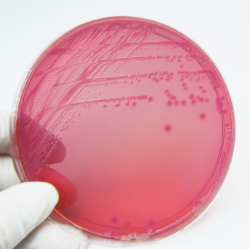Declare war on germs today!

Germ warfare is a never-ending battle on the home front.
Sounds like a line from the latest science-fiction action thriller, doesn’t it? Well, germs in the home are anything but fiction. But there is a science to it.
Eliminating these germs – or, more in keeping with reality, minimizing them, starts with knowledge. Where are they most commonly found? In what conditions do they flourish? Answers to these questions will help you to manage these germs and keep them under control in your home.
Not all germs are bad. In fact, some bacteria help us digest the food we eat. But it’s the bad ones that concern us here.
Some of the most common habitats for germs are in the kitchen and the bathroom. Think damp.
The kitchen
The kitchen
Exhausted after a morning of weekend housecleaning, do you ever get the feeling you’ve been busy with everything but the kitchen sink? Reread that question in its literal sense. The kitchen sink is often overlooked as a major source of household germs. Residual food particles can be prime breeding ground for some serious bacteria, including the dreaded E. coli and salmonella. Be careful, because these can be transferred to your hands or to food. Or better yet, keep the kitchen sink and drain plug clean by washing them daily with a bleach-and-water solution.
Cutting boards are another haven for bacteria in the kitchen. There’s a possibility of cross-contamination if you’re cutting raw meat or fish on a board and then using it for other foods. Many people keep a separate cutting board for raw meat, and another for fruits and vegetables. You can clean your cutting boards by washing them in hot water and dish detergent. You can then sanitize the boards with a bleach-and-water solution, or in the dishwasher.
Be sure to keep those countertops, sponges and dishrags clean too.
The bathroom
The bathroom
And now over to the bathroom. Keep the toilet clean – that includes the flush handle. The same goes for the bathtub and the sink – all of them welcoming environments for germs. That seems like just plain common sense.
But did you ever think about your toothbrush? You’re putting that in your mouth at least twice a day if you’re following your dentist’s recommendations. One researcher found that flushing the toilet sends water droplets into the air – and those droplets can carry bacteria and viruses which can remain airborne and then settle on various surfaces, including your toothbrush. Replace your toothbrush often, keep it away from the toilet, and put the lid down on the toilet before you flush.
Keep your hands clean, too. Dirty hands help to transfer bacteria and viruses to your eyes, nose and mouth. Hand washing is one of your key “germ warfare” tools. Be sure to wash your hands after you cough or sneeze, before you eat or put a meal together, after you touch a pet, when you come in from outside, or if you have been visiting with someone who is sick. Use warm water and soap for at least 20 seconds for thorough hand washing.


